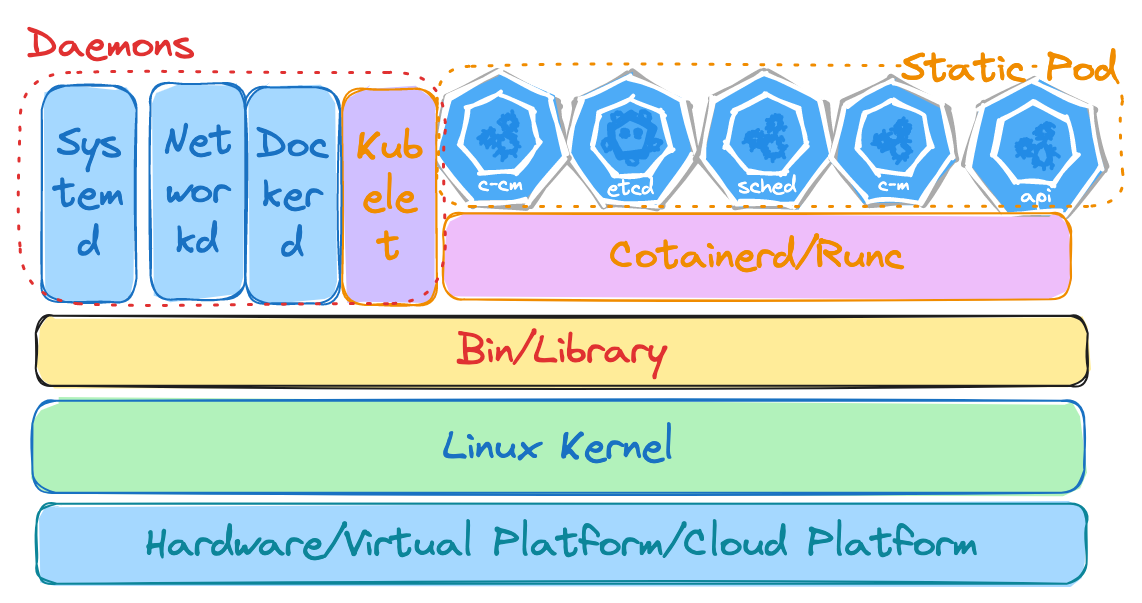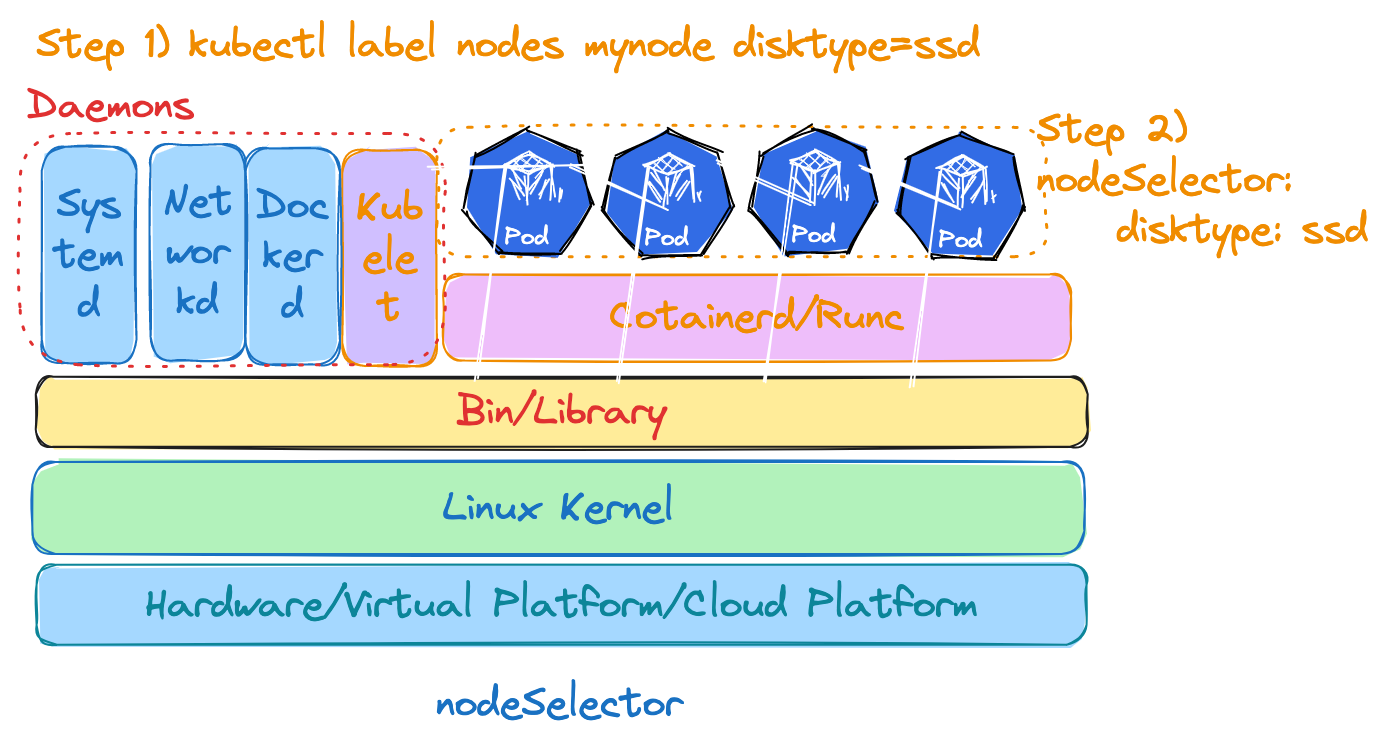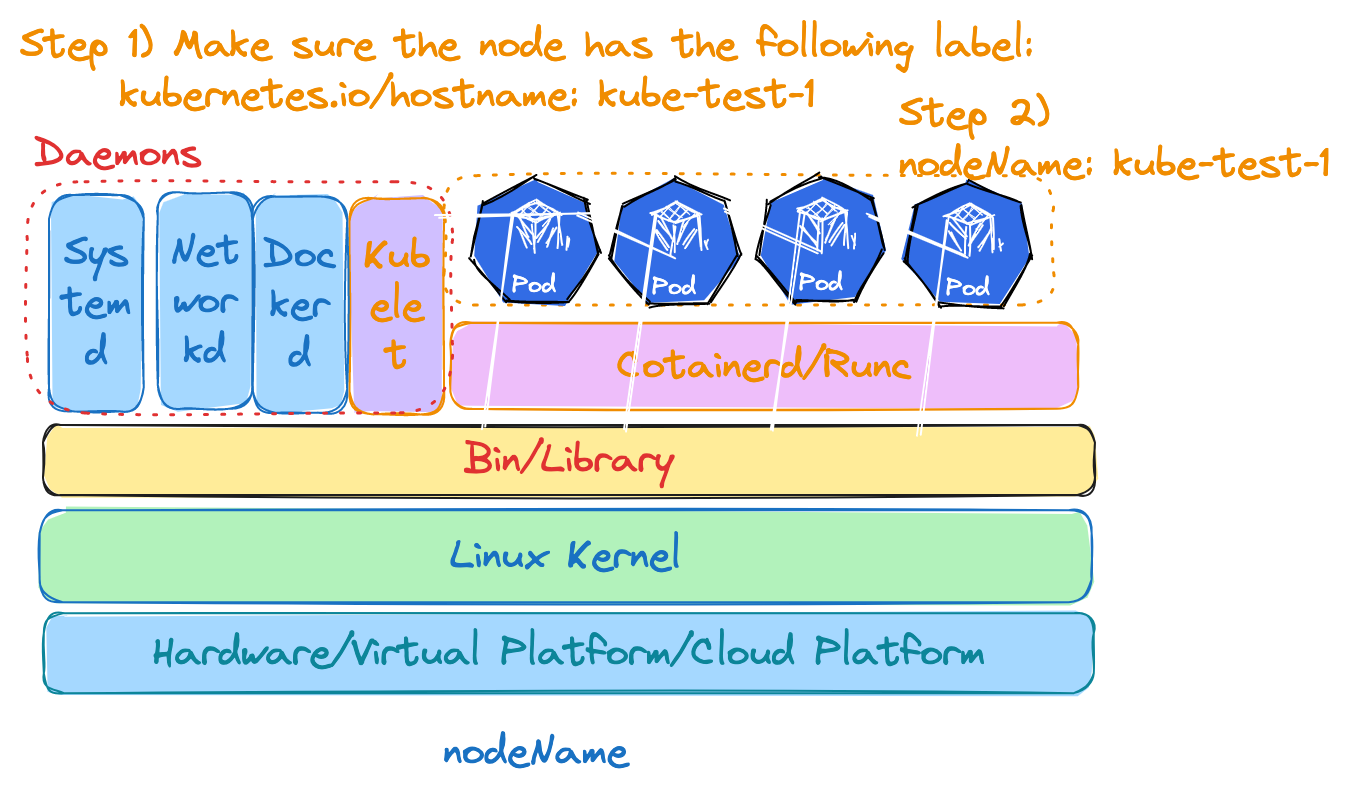Objective
To understand which Kubernetes node a pod is running on.
Overview
Various applications can be deployed in a Kubernetes cluster: Linux system daemons, Kubernetes components, Kubernetes Addons and various Kubernetes workloads.
To bind applications to a Kubernete node, there are two ways:
- Static Binding
- Dynamic Scheduling
Static Binding
Critical Linux system daemons such as systemd, chrony, Network Manager, kubelet, Container Runtimes are required to run on each node as standalone programs. Kubernetes control plane components are running in static pods, which are managed directly by the kubelet daemon using manifest files under /etc/kubernetes/manifests. Static pod can not refer to other Kubernetes objects like Service Account, ConfigMap, Secret, etc, and do not support ephemeral containers.
To make system daemons or static pods run on a particular node is to preload or install them into OS image before creating a node instance. The preloading usually happens staticaly before the cluster is formed.

Dynamic Scheduling
The kube-scheduler dynamically schedules pods to a worker node by considering the pod’s preferences specified in PodSpec and the node’s labels. Node labels can be attached manually or be well-known labels populated by kubelet.
nodeSelector
nodeSelector is the simplest way to let Kubernetes know your node preference. Add the nodeSelector field to Pod specificiation and specify the node labels you want the target node to have.

Node affinity
Node affinity is similar to nodeSelector, allowing Pod to be scheduled based on node labels. There are two types of node affinity: requiredDuringSchedulingIgnoredDuringExecution and preferredDuringSchedulingIgnoredDuringExecution. Node affinity can be specified using .spec.affinity.nodeAffinity field in Pod spec.

Inter-pod affinity and anti-affinity
Inter-pod affinity and anti-affinity allow to contrain which nodes Pods can be scheduled on based on the labels of Pods already running on the node, instead of the node labels. Two types of inter-node affinity and anti-affinity exist: requiredDuringSchedulingIgnoredDuringExecution and preferredDuringSchedulingIgnoredDuringExecution. affinity.podAffinity field is used for inter-pod affinity; while affinity.podAntiAffinity field is used for inter-pod anti-affinity.

See Zookeeper tutorial for an example of anti-affinity in practice!
Taints and Tolerations
Node affinity attracts Pods to a set of nodes; while Taints allow a node to repel a set ofpods. Taints are a special kind of key/value with taint effect that are applied to nodes.The node should not accept any pods that do not tolerate the taints. Toerations are applied to pods. Tolerations allow the scheduler to schedule pods with matching taints.

nodeName
nodeName is a field in the Pod spec, and used to bypass Kubernetes scheduler. You can
specify the nodeName and overrules nodeSelector or affinity and anti-affinity rules.
nodeName has some limitations to select nodes, and may result to pod scheduling failure.

Pod topology spread constaints
Topology spread constaints is used to control how pods are spread across cluster among failure-domains such as regions, zones, nodes.